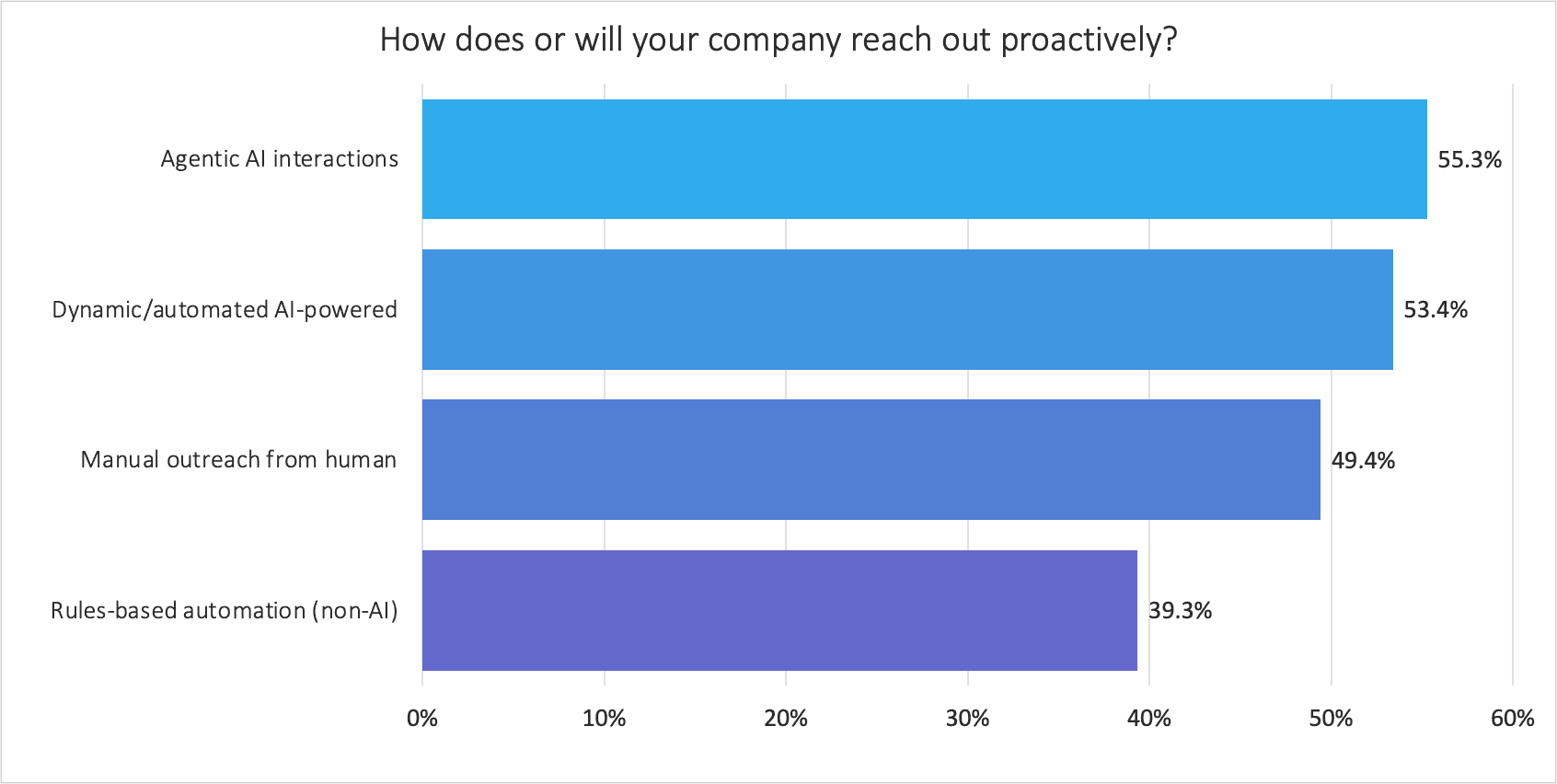
Metrigy, Customer Experience Optimization: 2025-26, September 26, 2025This marks a dramatic pivot from just one year ago, when human-led outreach dominated. The question is no longer whether AI will transform proactive engagement, but how organizations can harness this transformation responsibly and effectively.
1. Creating adaptive conversations
Non-agentic AI relies on predefined triggers and rules – essentially, “If you ask me, I’ll respond” – and doesn’t act on its own initiative. It appears in the form of rule-based chatbots or virtual assistants, for example, which only reply when a user types something in, but don’t proactively reach out at the right time.Agentic AI, on the other hand, operates with a degree of autonomy. It doesn’t simply respond to triggers; rather, it can:- Perceive customer context and signals in real time
- Decide on the best course of action based on goals and guardrails
- Act autonomously across channels, initiating or adapting outreach
- Learn from results to continuously optimize future actions
Example 1: Service continuity
A utility company using agentic AI during a power outage can avoid blasting all its customers with the same generic SMS or email. Instead, the autonomous AI agent identifies which neighborhoods are affected, checks each customer’s preferred channel, and sends proactive, personalized updates: “Hi Alex, we’re aware of the outage in your area. Power is expected to be restored by 4:15 p.m. In the meantime, here are some safety tips.” If restoration takes longer than expected, the agent automatically follows up with a new update; and if a customer replies with concerns, the AI agent adapts and escalates to a live agent if needed.Example 2: Fraud prevention
When unusual activity appears on a credit card, a traditional system might block the card and leave the customer frustrated. Agentic AI takes a smarter, customer-first approach. It evaluates the risk in real time and proactively reaches out on the customer’s chosen channel with a message like: “We noticed a $1,200 charge in Madrid. Was this you?” If the customer confirms fraud, then the AI locks the account, immediately issues a new virtual card, and notifies support. If the charge is legitimate, then the model adapts to reduce future false alarms.These use cases demonstrate how agentic AI transforms proactive outreach from scripted, one-way messages into living, adaptive conversations. The common thread is timeliness, personalization, and autonomy: proactively engaging with customers at the right moment, through the right channel, with the right action, and managing entire workflows without human handoff.
2. Personalizing at scale
Consumers value personalized proactive outreach, but they also value clear boundaries. It must be delivered on their preferred channel (as 62.9% of consumers expect), feel friendly (40.5% want the right level of small talk), and provide real value - whether it’s alerting them to a sale (38.1%, preventing an issue, or sharing timely updates - without being intrusive). Consumers are comfortable receiving an average of up to 3.7 text messages per week, according to Metrigy’s exclusive new report, Driving Customer Engagement with AI and Proactive Outreach.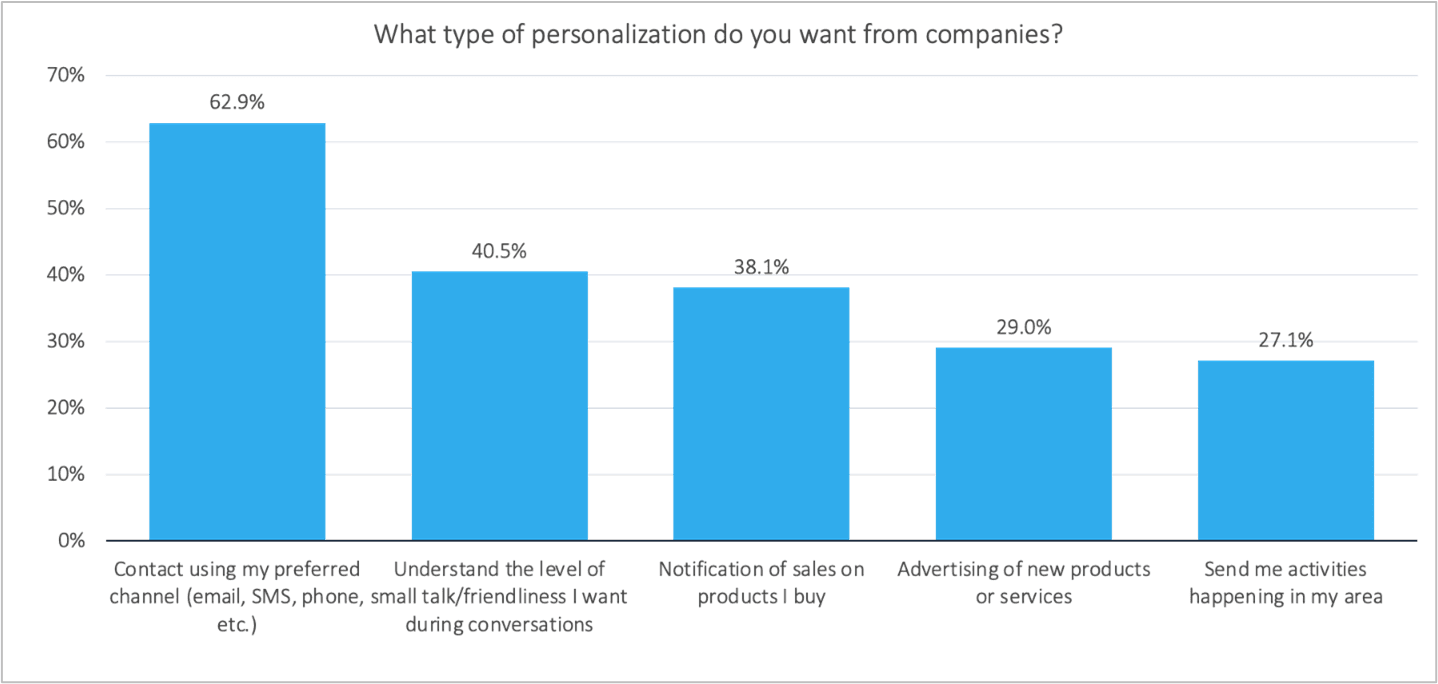
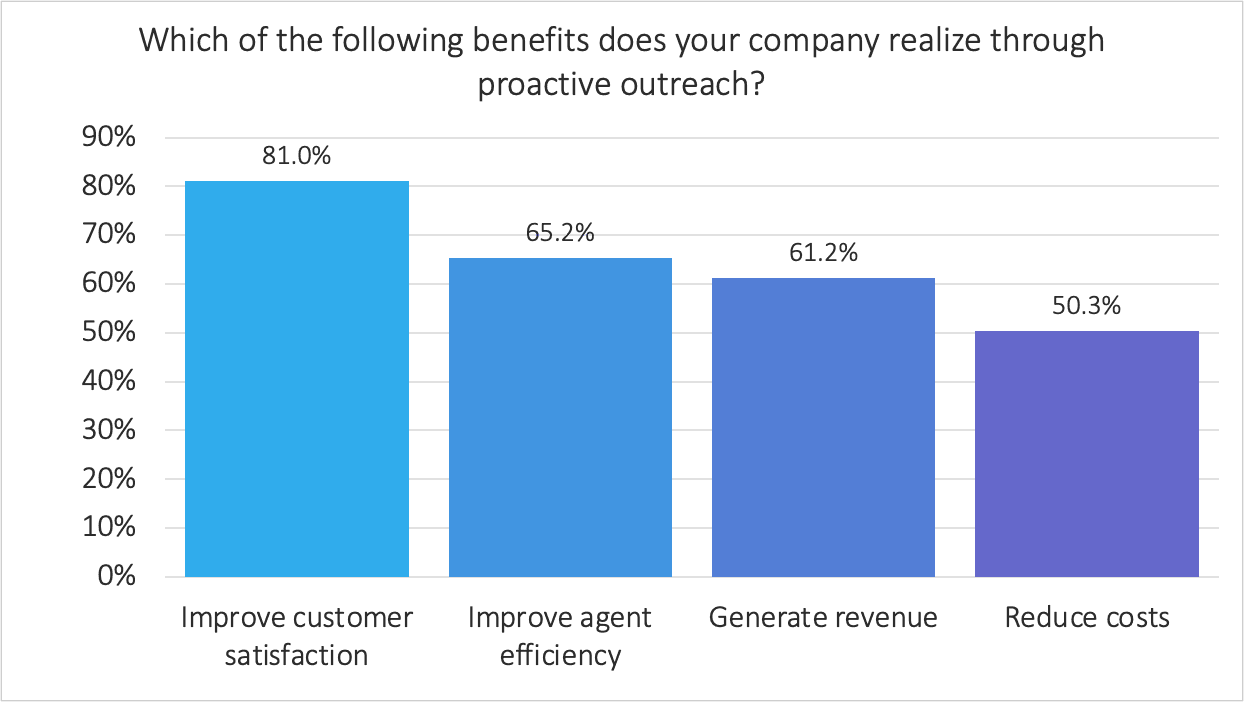
- Adaptive and thoughtful conversations: Agentic AI continuously interprets context, tone, and behavior to adjust interactions in real time.
- Autonomous prioritization: It doesn’t just schedule messages - it decides which customers to engage, when, and how, based on predicted outcomes like likelihood to churn, buy, or need support.
- Cross-journey orchestration: Agentic AI ensures continuity and consistent outreach across marketing, sales, and service. For example, if a customer declined an upsell yesterday, the agent won’t repeat it today, shifting the conversation to retention instead.
- Self-learning loops: Instead of waiting for humans to analyze reports, the system adapts instantly. If a fraud-prevention SMS template isn’t driving responses, for example, then the agentic AI rewrites it on the fly, independently, and tests alternatives.
- Proactive empathy: AI agents can detect emotional signals (confusion, frustration, disengagement) and adapt outreach with the right tone, escalating to human agents when empathy is critical.
3. Driving precision engagement
Aberdeen found leading firms tailor hyper-personalized communications and enhanced efficiency with AI to uplift proactive engagement results.Companies have long used proactive outreach for appointment reminders and delivery notifications. Today, Metrigy found the use cases are expanding to include service exceptions, upsell opportunities, fraud alerts, and collections.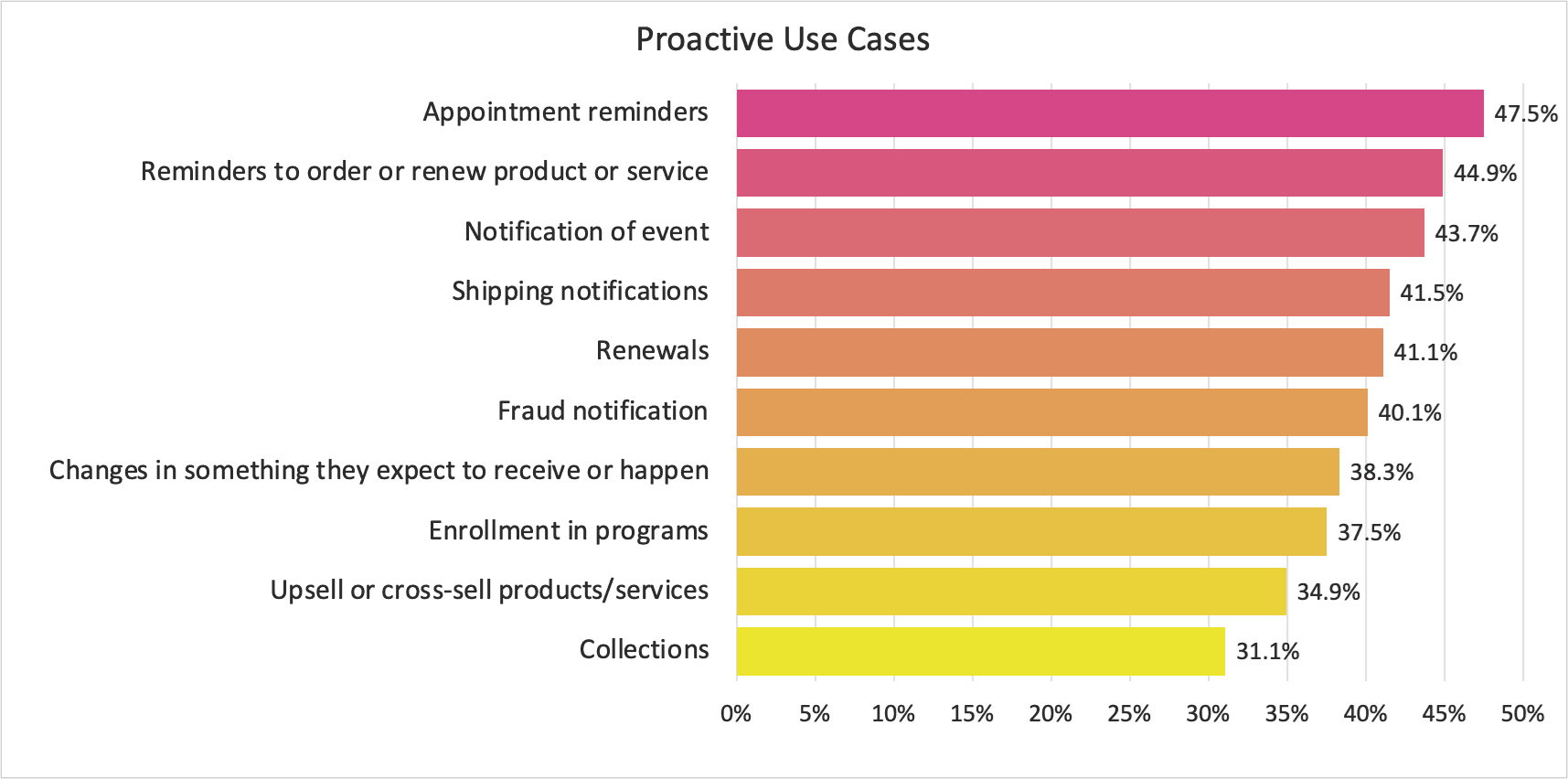
4. Orchestrating across channels: Where AI agents meet customers
The top three channels for proactive outreach remain: email (69.1%), phone calls (46.1%), and SMS/text (43.3%). In-app chat (42.4%), social apps (40.5%), and business messaging apps (37.5%) are also rapidly gaining traction. Rich Communication Services (RCS) - the next-generation SMS - already accounts for 23.7% usage.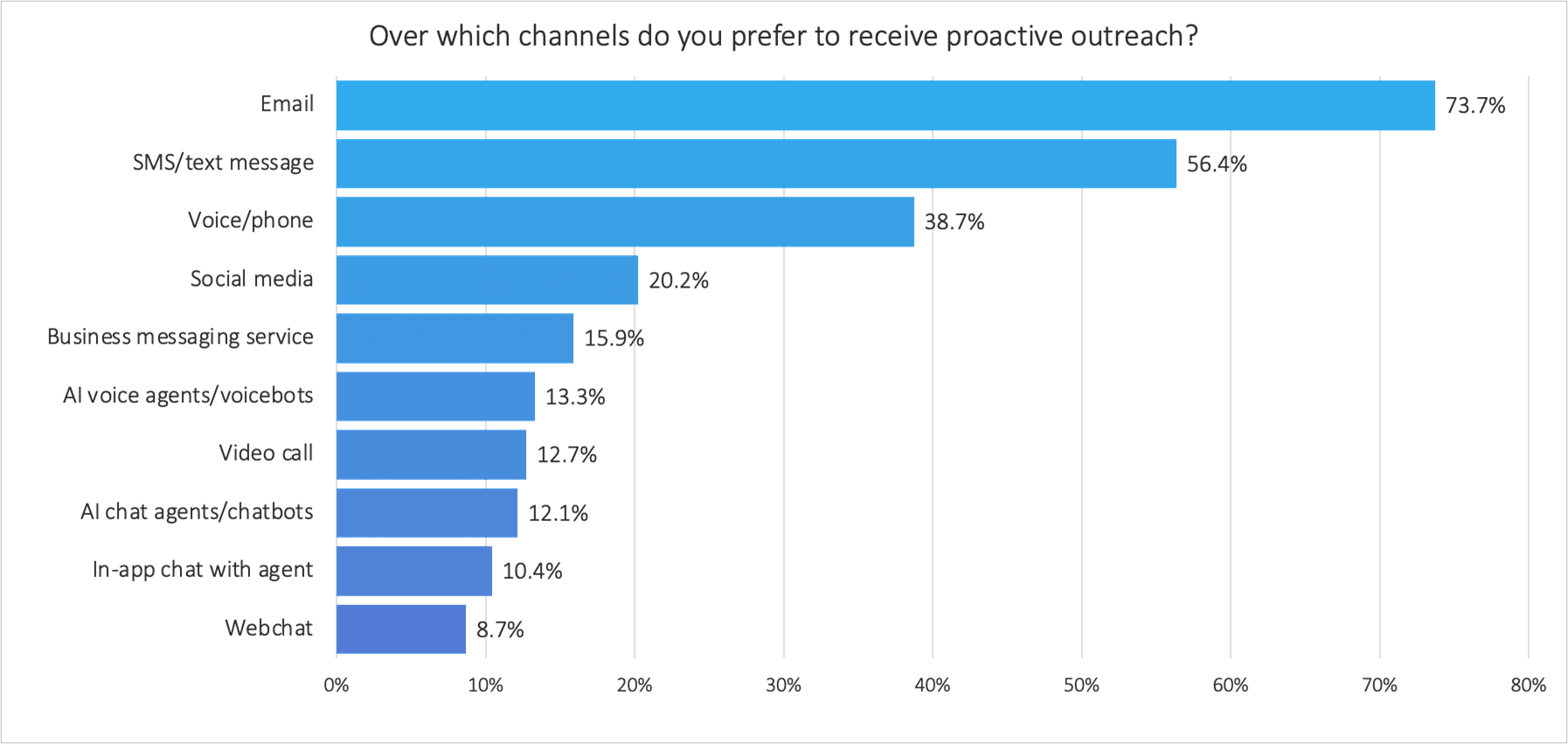
5. Building trust through compliance, ethics, and guardrails
According to Metrigy, 74.3% of companies already enforce stringent compliance controls in outbound campaigns, while another 23.8% want compliance features that some providers don’t yet offer.The CX impact: Customers are more likely to respond when outreach is branded and compliant. For organizations, this means designing agentic systems that:- Embed TCPA, FDCPA, and GDPR guardrails by default.
- Prioritize branded communication for trust and authenticity.
- Maintain human-in-the-loop oversight for sensitive decisions.
A strong foundation for AI transformation
You can’t enjoy the amazing benefits of AI transformation if your foundation is broken. As Forrester analysts explain, AI doesn’t automatically fix inefficiencies; it amplifies whatever you’ve already got going on, whether streamlined or chaotic. That’s why it’s critical to begin by assessing your current state: ensure processes are clearly defined, data governance makes information consistent and trusted, and employees can align with new technologies through strong change management, training, and enablement.Once the basics are in order, though, AI-powered analytics can become the essential building block for proactive enablement success. For companies across various sectors, it generates insights, identifies opportunities, and drives personalized engagement at scale. Agentic AI takes this even further, with the ability to collect consumer insights in real time, reason across contexts, and act autonomously.Together, AI-powered analytics and agentic AI form an intelligent engagement ecosystem. Analytics provides the intelligence, and the AI agent acts on it independently, turning data into real customer impact – faster and at scale.- Instantly turn insights into action: When analytics detects churn risk, agentic AI launches a tailored omnichannel retention campaign adapted to each customer’s requirements, with no need for human handoff.
- Adapt dynamically: When analytics surfaces new customer behaviors, agentic AI adjusts outreach tone, channel, and timing on the fly.
- Close the loop: Agentic AI continuously feeds results back into the analytics layer, creating a self-learning cycle that improves predictions and engagement outcomes.
The future of proactive outreach
The future of outreach is already here. As Robin Gareiss, CEO of Metrigy, has said, “Proactive engagement is becoming the standard - not the exception.”Nearly nine in 10 organizations are adopting or planning to adopt AI-powered personalization. And the introduction of agentic AI is both accelerating this shift and redefining customer relations, turning engagement from reactive firefighting into proactive relationship-building.As a result, companies are embracing agentic AI not just for the efficiency it brings, but for its high-value CX outcomes: higher CSAT, stronger loyalty, and measurable revenue growth.Tomorrow’s winners will be those who:- Adopt agentic AI early – embedding adaptive outreach into daily operations.
- Balance automation with human empathy – using AI for scale and humans for nuance.
- Build compliance into the core processes – ensuring every interaction builds trust.

The NiCE perspective: Agentic AI works for proactive outreach and better CX
At NiCE, we see agentic AI as the natural evolution of AI-powered proactive outreach. Companies are no longer limited to reaching out only at fixed intervals or in response to predefined triggers; instead, their outreach can be an ongoing dialogue that rapidly adapts as customers’ needs evolve.Through SmartReach and NiCE Cognigy – bringing together intelligent analytics and self-directed AI agents – organizations can:- Free employees to focus on complex, empathy-driven conversations
- Consolidate customer insights across every channel
- Dynamically and automatically determine the timing, channel, and delivery of messages
- Ensure compliance and branding across every interaction








